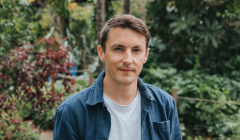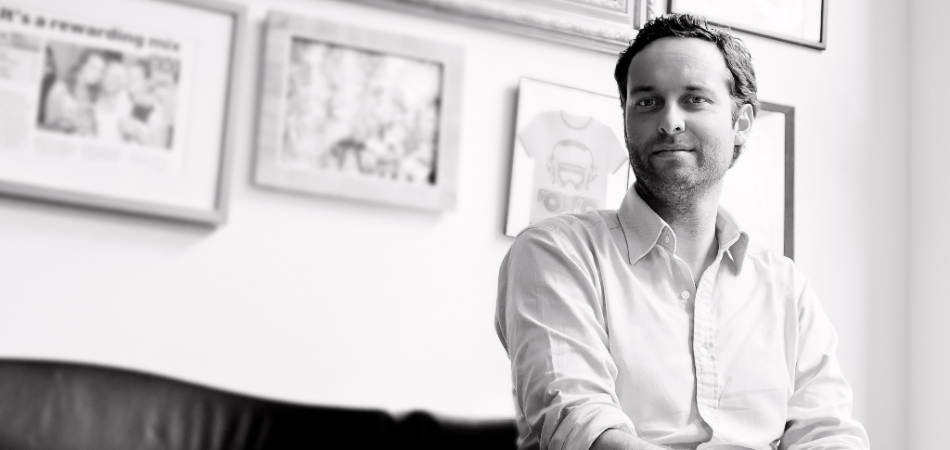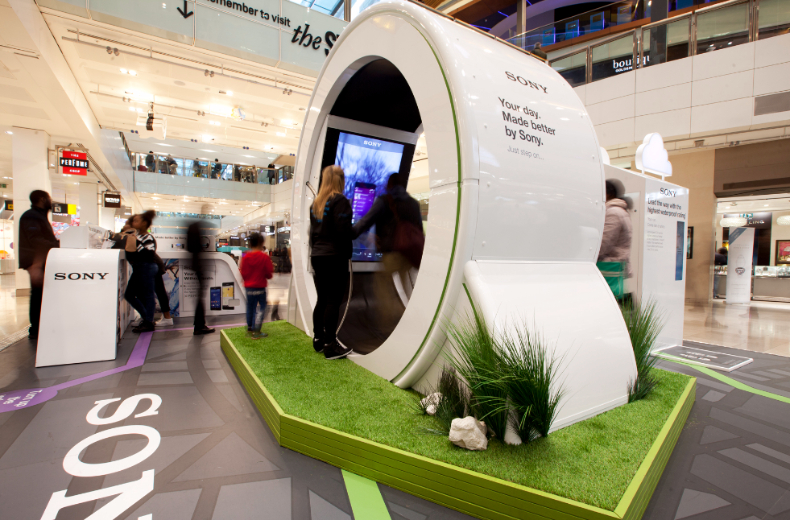
The Year Ahead: Creativity in Social Media
Chris Cookson, CEO & Co-Founder of Uncovered, on how brands can best engage with social media to connect with audiences.
CEO, Haygarth


Career to date:
1996, CEO, Haygarth
Marcus Sandwith: I’ve only been at Haygarth. I’ve been there 21 years and have gone from AE to CEO. I’ve been MD and CEO for 10 years now.
I think I just struck lucky because Haygarth really pushed standards and the quality and standards were high but we had a lot of fun doing it at the same time. People tend to stay longer so there’s more of a cultural family feel.
In terms of my primary purpose of being CEO, one of them is to make sure that I keep pushing those standards, lead the agenda and make sure that we’re maintaining that high quality but within a culture where people feel relaxed and open, where there’s no fear. I think if you’re in a very corporate environment, where you’re scared of doing something wrong, then you’re not going to get your best work.
Everything we do centres around people. We’re not selling products, we’re selling peoples’ creativity or strategy and their time and their effort. You’ve got to attract the right people and you’ve got to keep the right people. First of all, you’ve got to work hard to make your agency as enticing as possible to attract those people, and then you’ve got to keep them, because if they only stay for 6 months or a year, then it doesn’t really serve anyone; it doesn’t serve your agency and it doesn’t serve the clients if you’re constantly changing people.
When you’re CEO, you obviously don’t work on day to day project management. I help review work, but I’m not stuck in one project all week. The advantage of that is my role is to think up and out about what are we doing in the next six months, year, three years. There aren’t many people who are going to be doing that. I’ve got to be thinking about what’s coming next and prepare for it.
Marcus Sandwith: There’s a lot to cover in twenty-one years but I suppose through that time you learn lots of things. It’s important that you aren’t in a company when everything is always going well, because then how do you react when things don’t go well? Just after I was made MD, which was in 2007, at the beginning of 2008 we lost our largest client and it was quite a large part of our business. We had to make over 40 people redundant. That was in my first couple of months as MD.
But then that was the catalyst to us not being so dependent on one client. We started winning new business. Whilst it was terrible, it changed the company because it meant that we actually started to be more outward looking. It galvanised us and we entered into a period of growth that has carried on.
We were an independent agency until 2014, so I managed that change from being an independent and doing everything that you want to do, to being part of a network. The key thing is making sure you don’t stray too far away from what made you a good place to work in the first place.
“Everything we do centres around people. We're not selling products, we're selling peoples' creativity or strategy and their time and their effort. You've got to attract the right people and you've got to keep the right people."
Marcus Sandwith: Two clients that we have been producing award winning work for, are Clarins and Sony Mobile, both of which include brand engagement but with a drive to purchase. There was a lot of influencer and blogger activity, a lot of engagement and experiential face to face activity but also retail sales and continuing social discussion.
Marcus Sandwith: I am a bit tired of brands talking about their higher purpose so it was good to see Heineken’s World’s Apart campaign. It is a fantastic example of a brand reconnecting with its core role to bring people together. It is ‘realistic purpose’ which I think is much more meaningful.
Marcus Sandwith: The one that stuck out in the conversion/promotional activation space, was a campaign by a US telecoms company store group which re-registered itself for people to vote [Boost Mobile]. That was quite interesting, because it drove huge numbers of people into store but with a positive non-commercial message. There was a real need to get more people voting in those certain areas, because in deprived areas people couldn’t vote. [Boost] were doing something that was good, but it was also commercial. It’s quite difficult to do that, which is probably why it stood out because it is hard to make both of those objectives stick.
Marcus Sandwith: That’s a tricky question. I think the whole industry is becoming more fragmented. Clients are wanting you to be able to work seamlessly through all the different channels. It’s less about broadcast and more about engagement.
I’m not saying it’s the death of small specialist agencies who are selling unique products. That’s going to continue because they’re going to be more innovative. But it might be that agencies need to partner. It’s not just one agency takes all. It’s trying to fill in the gaps so it’s seamless, by either buying in new skillsets within your agency or partnering better with specialist agencies. And being honest about what you can or can’t do.
“But it might be that agencies need to partner. It's not just one agency takes all. It's trying to fill in the gaps seamlessly by either buying in new skillsets within your agency or partnering better with specialist agencies. And being honest about what you can or can't do."
Marcus Sandwith: Agencies sometimes quite like pitching because it’s their chance to show off their skills and creatives and strategists like solving creative problems. It’s the least worst way to find a new agency.
I don’t think you get the best of things when they become too over-procurement-ised. It can end up with the agency giving psycho-marketing waffle answers and, if you are looking for creative ideas, I think you should do a dummy creative brief. You’re either hiring someone because you’re looking for a great strategic plan or a great creative answer, so you should pitch that skill.
Sometimes pitches can be judged like a theatrical performance. We’re not in Hollywood, we’re not actors. That should be a portion of it. It should be like 10%, but it shouldn’t be 90% and sometimes it can turn into 90%. At the heart of the pitch should be your ability to solve their problem alongside the necessity of chemistry, experience and capability.

Marcus Sandwith: They quite often bring sports people into marketing events because there are a lot of parallels around competitive spirit and mind-set. I’m a big tennis fan, I like Roger Federer. What I like about him is, he’s a huge competitive spirit but he does it effortlessly. The fact that it feels quite simple and straightforward, but it can be amazing, and it doesn’t look like he’s having to really work hard. He is working hard you can tell, but it’s like a duck; it’s all going on underneath but it’s effortless and simple and straightforward, yet he can do amazing things.
The rugby coach Eddie Jones talks a lot about building relationships and finding out how each person ticks. Some people need a kick up the backside; some people need a head massage. That’s the same as running an agency. You can’t just treat everyone in the same way and you have to think what makes them tick.
As you can probably tell from the nature of my answers, I don’t really subscribe to all the marketing waffle psycho-babble. I like people who just say it how it is but I don’t mean people who are straight talking, insensitive and upset everyone, but those who do it in an empathetic and fair way but are able to cut through.
How can brands give customers the tools to express their own identity? What are your thoughts on this? Have you seen brands doing that? Or do you think they shouldn’t?
It so depends on the brand doesn’t it? Self-expression is a fundamental human need, so if you can make your brand feel like it’s in tune and in sync with your consumer and it’s expressing something about them, helping them express themselves then you don’t have to try at it.
There are some products which started off all about self-expression and then you see everyone’s got it. It’s now just a way of life. It starts off as self-expression and then it moves into mainstream. It’s cyclical and there are phases. But also, you’ve got to test it to see if it feels natural to your audience or whether it feels like a bit of a step too far.
Looks like you need to create a Creativebrief account to perform this action.
Create account Sign inLooks like you need to create a Creativebrief account to perform this action.
Create account Sign in